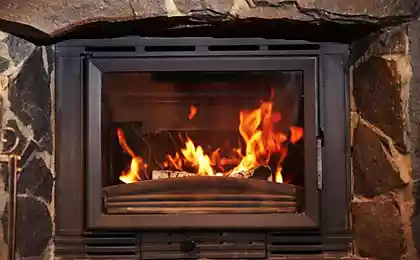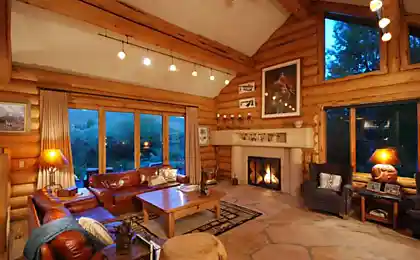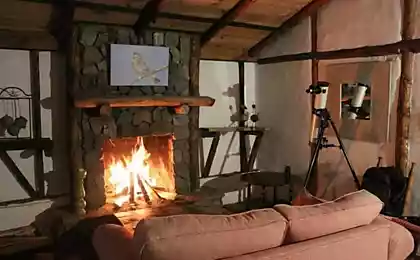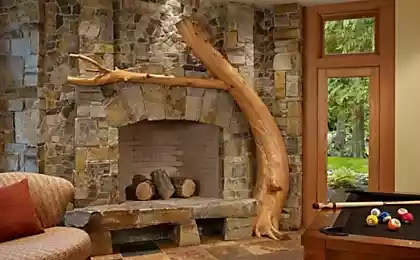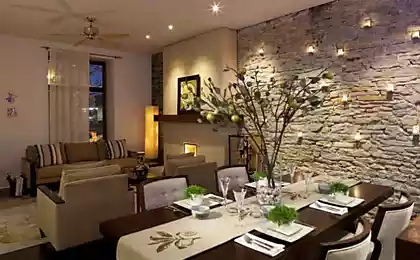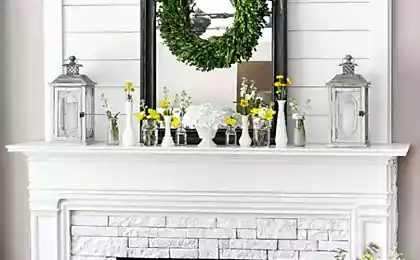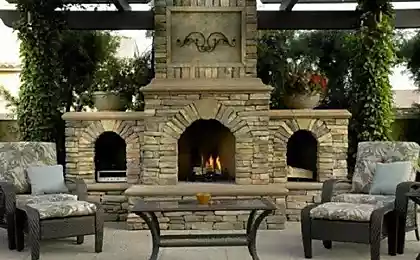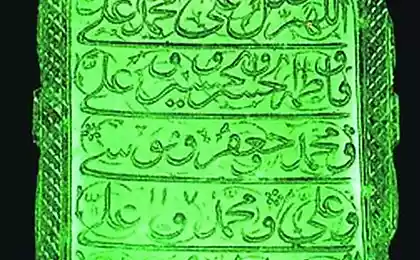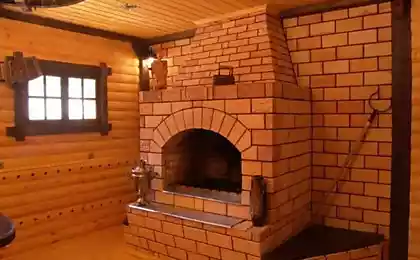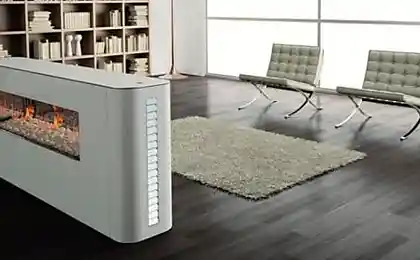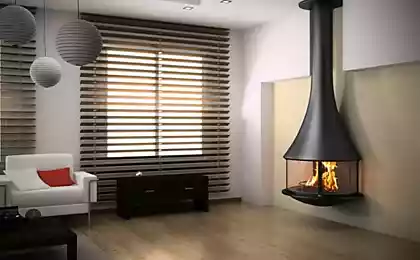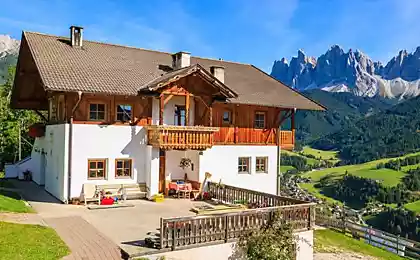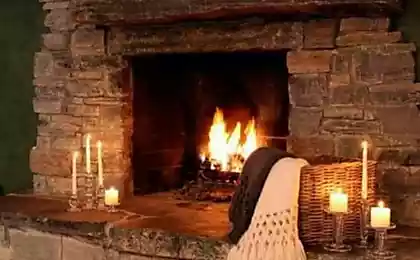605
Veneer fireplace stone with their hands
What is the stone used for the fireplaceDespite the fact that the lining of the fireplace is not experiencing a pronounced temperature extremes, it is still located inside the dwelling. Because of this, you want to completely eliminate any possibility of harmful emissions, and therefore the use of sedimentary rocks like shale or Sandstone should not be.
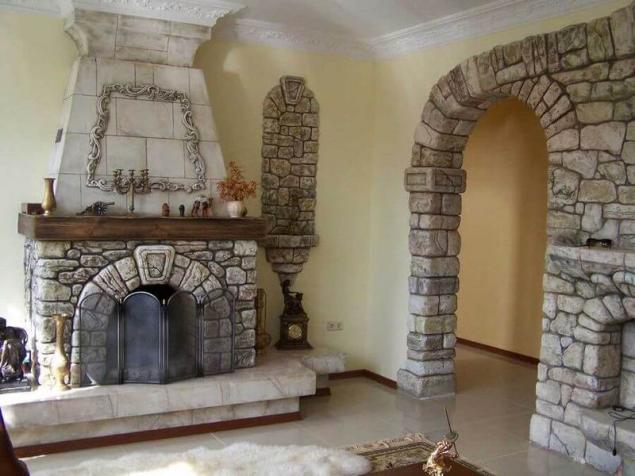
From the point of view of radiological safety as well the best solution is to clad the fireplace with granite stones. The main risk factor from the use of such materials in the interior finishing is not associated with natural background radiation of rocks and gases, which the stones are saturated and isolated at times even more intense and a little heat. The most dangerous is radon.
For facing the fireplace it is recommended to purchase the noble rocks of a volcanic origin. In the budget projects use large pebbles and pebbles, may also be used relief of articles of concrete, stones of artificial origin.
Really great look you can achieve with the use of the same species that are used to bookmark stoves: basalt, diabase, jadeite. These rocks are even with strong heating does not form harmful emissions and are completely safe. Stones is better to select your own preferred flat format of different sizes interspersed with equilateral stones of the same thickness, which will be filled in the empty spaces of the layout. It is better to buy stones grinding medium or even raw.
The choice of adhesiveIf you use dense solid rock without defects, the durability of the fireplace mantel will depend entirely on the quality of the adhesive mixture and the reliability of its adhesion to the brick Foundation. To work at such temperatures the grout a long way, so the choice is narrowed to two choices: buying a ready-made dry adhesive mixture, special purpose or preparation of their own solution based on chamotte clay.
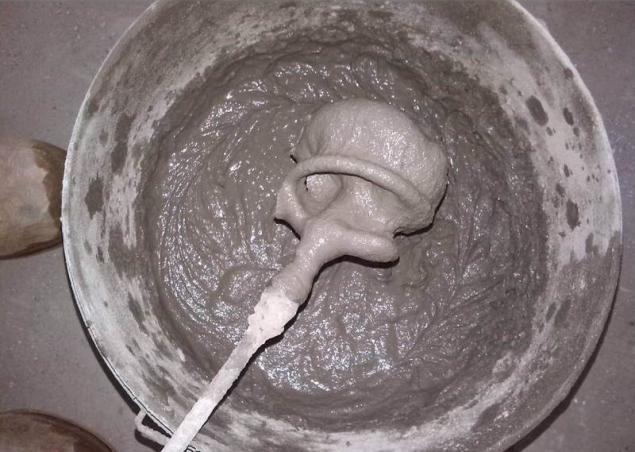
Ready all just, in most cases will be quite normal Cerеsit ST-17 or Knauf "Marble". You can also use more specialised mix Scanmix like Fire. The main limitation to use this kind of adhesive — maximum thickness of the seam, making the choice of material for masonry is limited to artificial stone. Natural breed has an irregular shape, and put it on the tile adhesive only after careful adjustment.
Relative freedom in this respect provides a makeshift solution: he stones can be laid without the tedious grinding, which will give the fireplace a more authentic look. Part of the solution consists of chamotte clay, river or mountain sand and cement grade not lower than 300 ratio of dry weight 3:1:1. The clay must pre-wipe through a sieve, to get rid of debris and droplets, and then pour the water to 40-50 hours. After that, the mixture is added to sand, it is necessary to repair the cracking at the initial stage of setting. Cement is needed to accelerate the setting time and increasing the adhesion, it is added immediately prior to laying. In such solution it is advisable to use heat-resistant plasticizers. The final mixing should be performed with a mixer or a drill with a nozzle for tile adhesive.
How to prepare the laying surfaceof the Third component of the quality of the fireplace mantel — a carefully prepared base. Brickwork to ground is strictly necessary and the composition for this to be possible. It is recommended to use Knauf Tiefengrund or equivalent primer for acrylate-based Dufa Putzgrung, Marshall Export Base, but not necessarily for internal works.
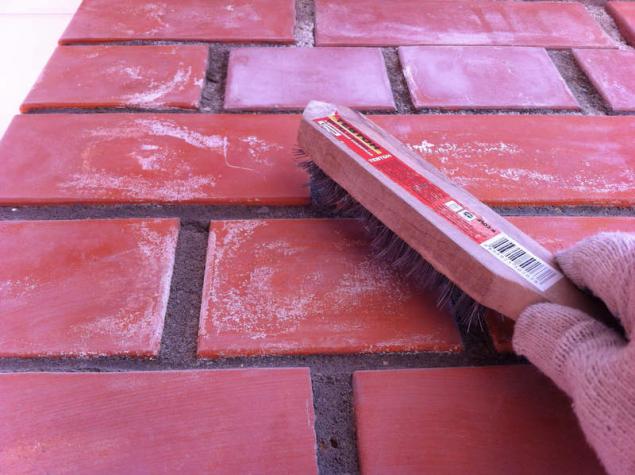
Second step — fixing plaster mesh. The cell size have to select twice more than the planned thickness of the adhesive joint. Attach the net with dowels in plastic tubes is impossible, you should use a metal anchor wedges with a diameter of 6 mm attachment points are arranged with a frequency of about 25-30 cm to Strengthen it is necessary in the body of the brick and not into the seam. So masonry is not cracked, put the punch on lower revs.
Additionally, you can "break" the surface of the masonry, obstuchal it with a hammer and chisel to form a plurality of notches. This will significantly increase the adhesion, but do so only at the initial stage before priming. At the end of the preparation the surface must be thoroughly clean, it is also possible to open the walls another coat of primer from a hand sprayer.
Circuit layoutAll facing the fireplace, usually can be divided into a number of flat sections. These include the front and side walls, it is also possible to expand the lower part with the formation of the cap. Shelf the fireplace, as a rule, do not revet to have an additional functional surface.
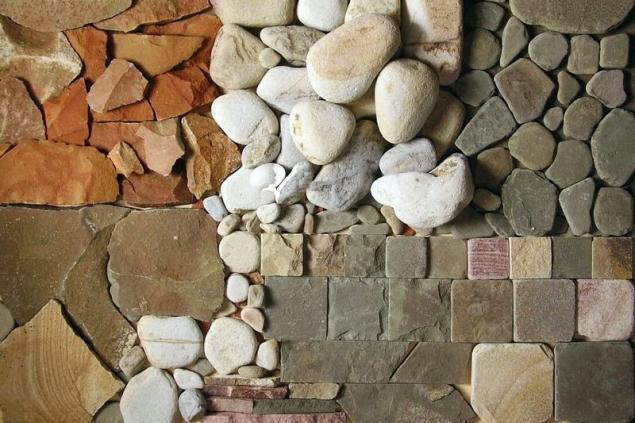
Flat areas should be displayed in the diagram of the scanner on a sheet of A4 and indicate all key dimensions. Received on the floor is going to reveal a mosaic of stones and their fragments, which are adjusted to each other as tightly as possible. The joints between the cladding elements should not exceed 20-25 mm in the optimal variant it is recommended to adhere to the values of 5-6 mm.
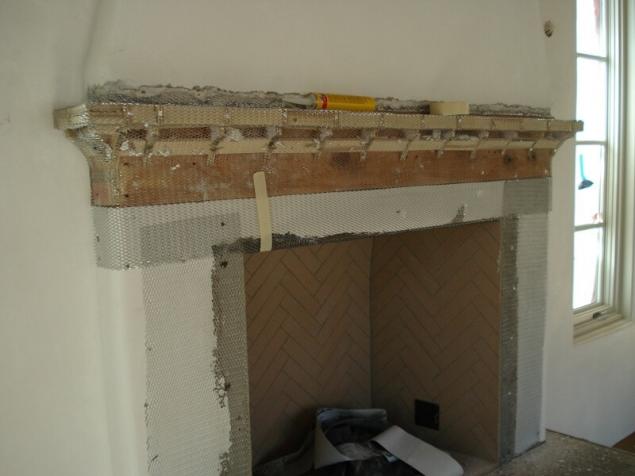
To fit stones of irregular form closely not very difficult, but it is quite difficult to capture natural looking faces. Most of the rocks perfectly cut disc for angle GRINDERS on concrete. To give the edges chipped and breakup using picks, also a good help will disc the grinding disc, the common people called "bug".
Before cutting and polishing the stones must be soaked in water. This will not only protect against dusting of the workplace, but also allow you to clearly see the finished result without color distortion from the uneven refractive index, and subsequently will improve the adhesion with the solution. The edge of each cut the plot should be left smooth with a slouchy fit by the line of intersection of the planes about 30-40 mm. Very good if you can provide corner dressing: where on the edge of the flat area scan gaps will be inserted stones of suitable shape with the adjacent plane.
Order liningLining always starts from the bottom front of the fireplace on which the firebox. Shelf of solid wood or artificial stone should be fixed, it will be displayed to fit the top row of stones. The front part when you sort, you should select the most beautiful stones, tightly fit between them and matched in shape and size.
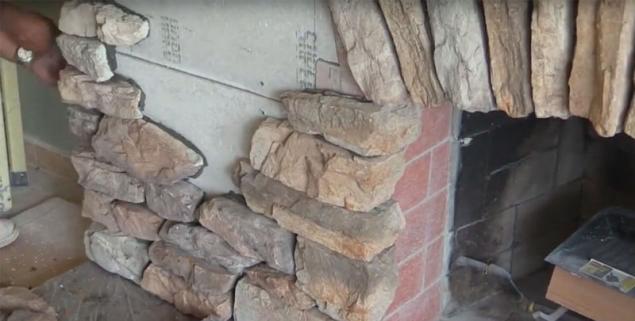
Since the life time of the adhesive is high enough, it is recommended to first thoroughly clean the entire surface, burying the solution under the grid and then add the mixture in small portions during the laying. Planting stones is conducted on a continuous seam, without voids, each element of masonry falls several times to tear off, to make sure that the glue has filled all the cavities.
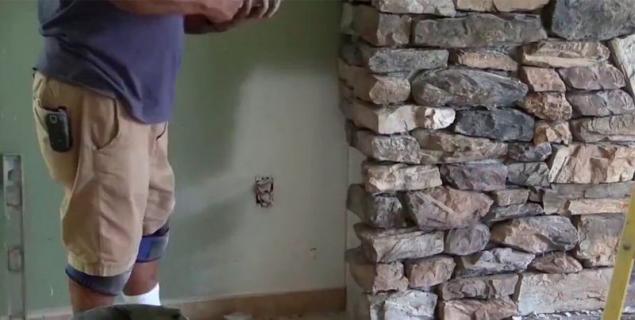
When the front of the fireplace faced on the edges and in the mouth of the furnace can remain exposed to the elements. They are removed after drying of the mixture, it is easiest to do the final grinding disc drive. Meantime, the focus should be on facing the rest of the planes. After the front laid out sides of the fireplace, the bottom area is coated in the least.
Until the glue has dried, the seams should be sewn. In the simplest embodiment, the glue just wipe with your finger to form a semicircular hollow. It is also possible to scratch the adhesive residue with a scraper, they do not carry any payload. Instead of the standard pointing in this case, waiting for final trimming and sanding of protruding elements after drying. In conclusion, in the cracks between the stones using a pastry syringe or waste package with the angled blow out the tinted glue mixture, which forms a convex seam with fancy ridges.
How to lay out the arched vault ofthe Greatest difficulty for Amateurs is facing semicircular arch of the furnace. To realize this idea requires at the first stage of laying before facing front to put a column in the lower corners of the opening. They should protrude above the General plane of the front part as much as you plan to do the ledge of the arch.
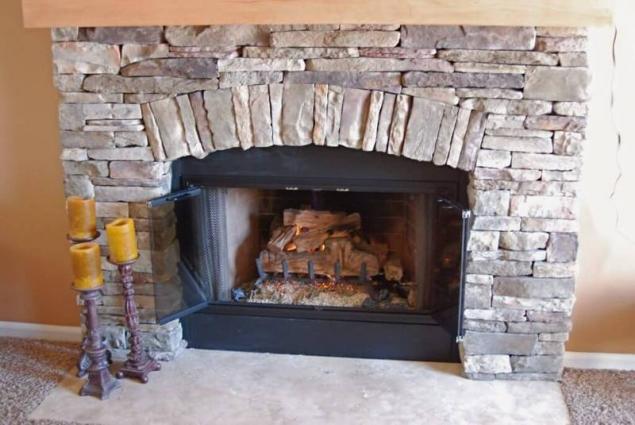
Further, all difficulties are reduced to the proper selection of stones. They should have a wedge shape. To compensate for the circular brickwork of the variable thickness of seams is also possible, but it does not look as aesthetically pleasing as the arch of brick. For arch support, as usual, constructed the formwork of the folded sheet cragis.
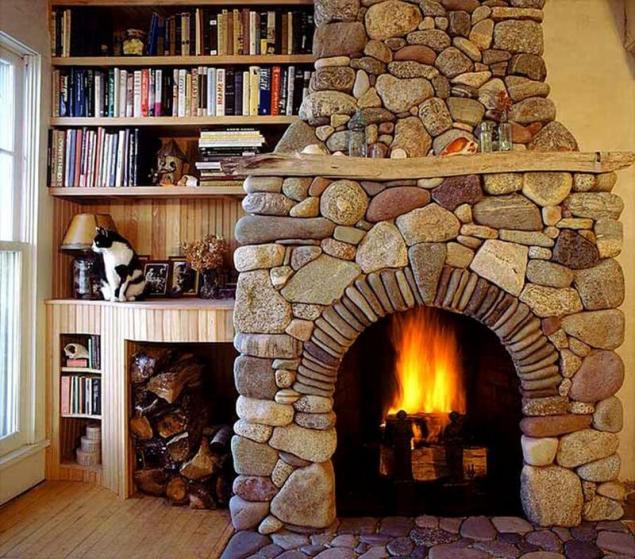
Do not forget that the highlight of any arch is a major cornerstone of the trapezoidal shape, installed in the center top. It should be selected in advance from the source material, this must be the most beautiful element of the covering. If you have adjusted the stones carefully enough and a few times moved the ark to dry, it will stick, even if the adhesive mixture crack: center stone hold tightly folded arch from collapsing. published
P. S. And remember, only by changing their consumption — together we change the world! ©
Source: www.rmnt.ru/story/fireplaces/1304603.htm

From the point of view of radiological safety as well the best solution is to clad the fireplace with granite stones. The main risk factor from the use of such materials in the interior finishing is not associated with natural background radiation of rocks and gases, which the stones are saturated and isolated at times even more intense and a little heat. The most dangerous is radon.
For facing the fireplace it is recommended to purchase the noble rocks of a volcanic origin. In the budget projects use large pebbles and pebbles, may also be used relief of articles of concrete, stones of artificial origin.
Really great look you can achieve with the use of the same species that are used to bookmark stoves: basalt, diabase, jadeite. These rocks are even with strong heating does not form harmful emissions and are completely safe. Stones is better to select your own preferred flat format of different sizes interspersed with equilateral stones of the same thickness, which will be filled in the empty spaces of the layout. It is better to buy stones grinding medium or even raw.
The choice of adhesiveIf you use dense solid rock without defects, the durability of the fireplace mantel will depend entirely on the quality of the adhesive mixture and the reliability of its adhesion to the brick Foundation. To work at such temperatures the grout a long way, so the choice is narrowed to two choices: buying a ready-made dry adhesive mixture, special purpose or preparation of their own solution based on chamotte clay.

Ready all just, in most cases will be quite normal Cerеsit ST-17 or Knauf "Marble". You can also use more specialised mix Scanmix like Fire. The main limitation to use this kind of adhesive — maximum thickness of the seam, making the choice of material for masonry is limited to artificial stone. Natural breed has an irregular shape, and put it on the tile adhesive only after careful adjustment.
Relative freedom in this respect provides a makeshift solution: he stones can be laid without the tedious grinding, which will give the fireplace a more authentic look. Part of the solution consists of chamotte clay, river or mountain sand and cement grade not lower than 300 ratio of dry weight 3:1:1. The clay must pre-wipe through a sieve, to get rid of debris and droplets, and then pour the water to 40-50 hours. After that, the mixture is added to sand, it is necessary to repair the cracking at the initial stage of setting. Cement is needed to accelerate the setting time and increasing the adhesion, it is added immediately prior to laying. In such solution it is advisable to use heat-resistant plasticizers. The final mixing should be performed with a mixer or a drill with a nozzle for tile adhesive.
How to prepare the laying surfaceof the Third component of the quality of the fireplace mantel — a carefully prepared base. Brickwork to ground is strictly necessary and the composition for this to be possible. It is recommended to use Knauf Tiefengrund or equivalent primer for acrylate-based Dufa Putzgrung, Marshall Export Base, but not necessarily for internal works.

Second step — fixing plaster mesh. The cell size have to select twice more than the planned thickness of the adhesive joint. Attach the net with dowels in plastic tubes is impossible, you should use a metal anchor wedges with a diameter of 6 mm attachment points are arranged with a frequency of about 25-30 cm to Strengthen it is necessary in the body of the brick and not into the seam. So masonry is not cracked, put the punch on lower revs.
Additionally, you can "break" the surface of the masonry, obstuchal it with a hammer and chisel to form a plurality of notches. This will significantly increase the adhesion, but do so only at the initial stage before priming. At the end of the preparation the surface must be thoroughly clean, it is also possible to open the walls another coat of primer from a hand sprayer.
Circuit layoutAll facing the fireplace, usually can be divided into a number of flat sections. These include the front and side walls, it is also possible to expand the lower part with the formation of the cap. Shelf the fireplace, as a rule, do not revet to have an additional functional surface.

Flat areas should be displayed in the diagram of the scanner on a sheet of A4 and indicate all key dimensions. Received on the floor is going to reveal a mosaic of stones and their fragments, which are adjusted to each other as tightly as possible. The joints between the cladding elements should not exceed 20-25 mm in the optimal variant it is recommended to adhere to the values of 5-6 mm.

To fit stones of irregular form closely not very difficult, but it is quite difficult to capture natural looking faces. Most of the rocks perfectly cut disc for angle GRINDERS on concrete. To give the edges chipped and breakup using picks, also a good help will disc the grinding disc, the common people called "bug".
Before cutting and polishing the stones must be soaked in water. This will not only protect against dusting of the workplace, but also allow you to clearly see the finished result without color distortion from the uneven refractive index, and subsequently will improve the adhesion with the solution. The edge of each cut the plot should be left smooth with a slouchy fit by the line of intersection of the planes about 30-40 mm. Very good if you can provide corner dressing: where on the edge of the flat area scan gaps will be inserted stones of suitable shape with the adjacent plane.
Order liningLining always starts from the bottom front of the fireplace on which the firebox. Shelf of solid wood or artificial stone should be fixed, it will be displayed to fit the top row of stones. The front part when you sort, you should select the most beautiful stones, tightly fit between them and matched in shape and size.

Since the life time of the adhesive is high enough, it is recommended to first thoroughly clean the entire surface, burying the solution under the grid and then add the mixture in small portions during the laying. Planting stones is conducted on a continuous seam, without voids, each element of masonry falls several times to tear off, to make sure that the glue has filled all the cavities.

When the front of the fireplace faced on the edges and in the mouth of the furnace can remain exposed to the elements. They are removed after drying of the mixture, it is easiest to do the final grinding disc drive. Meantime, the focus should be on facing the rest of the planes. After the front laid out sides of the fireplace, the bottom area is coated in the least.
Until the glue has dried, the seams should be sewn. In the simplest embodiment, the glue just wipe with your finger to form a semicircular hollow. It is also possible to scratch the adhesive residue with a scraper, they do not carry any payload. Instead of the standard pointing in this case, waiting for final trimming and sanding of protruding elements after drying. In conclusion, in the cracks between the stones using a pastry syringe or waste package with the angled blow out the tinted glue mixture, which forms a convex seam with fancy ridges.
How to lay out the arched vault ofthe Greatest difficulty for Amateurs is facing semicircular arch of the furnace. To realize this idea requires at the first stage of laying before facing front to put a column in the lower corners of the opening. They should protrude above the General plane of the front part as much as you plan to do the ledge of the arch.

Further, all difficulties are reduced to the proper selection of stones. They should have a wedge shape. To compensate for the circular brickwork of the variable thickness of seams is also possible, but it does not look as aesthetically pleasing as the arch of brick. For arch support, as usual, constructed the formwork of the folded sheet cragis.

Do not forget that the highlight of any arch is a major cornerstone of the trapezoidal shape, installed in the center top. It should be selected in advance from the source material, this must be the most beautiful element of the covering. If you have adjusted the stones carefully enough and a few times moved the ark to dry, it will stick, even if the adhesive mixture crack: center stone hold tightly folded arch from collapsing. published
P. S. And remember, only by changing their consumption — together we change the world! ©
Source: www.rmnt.ru/story/fireplaces/1304603.htm
